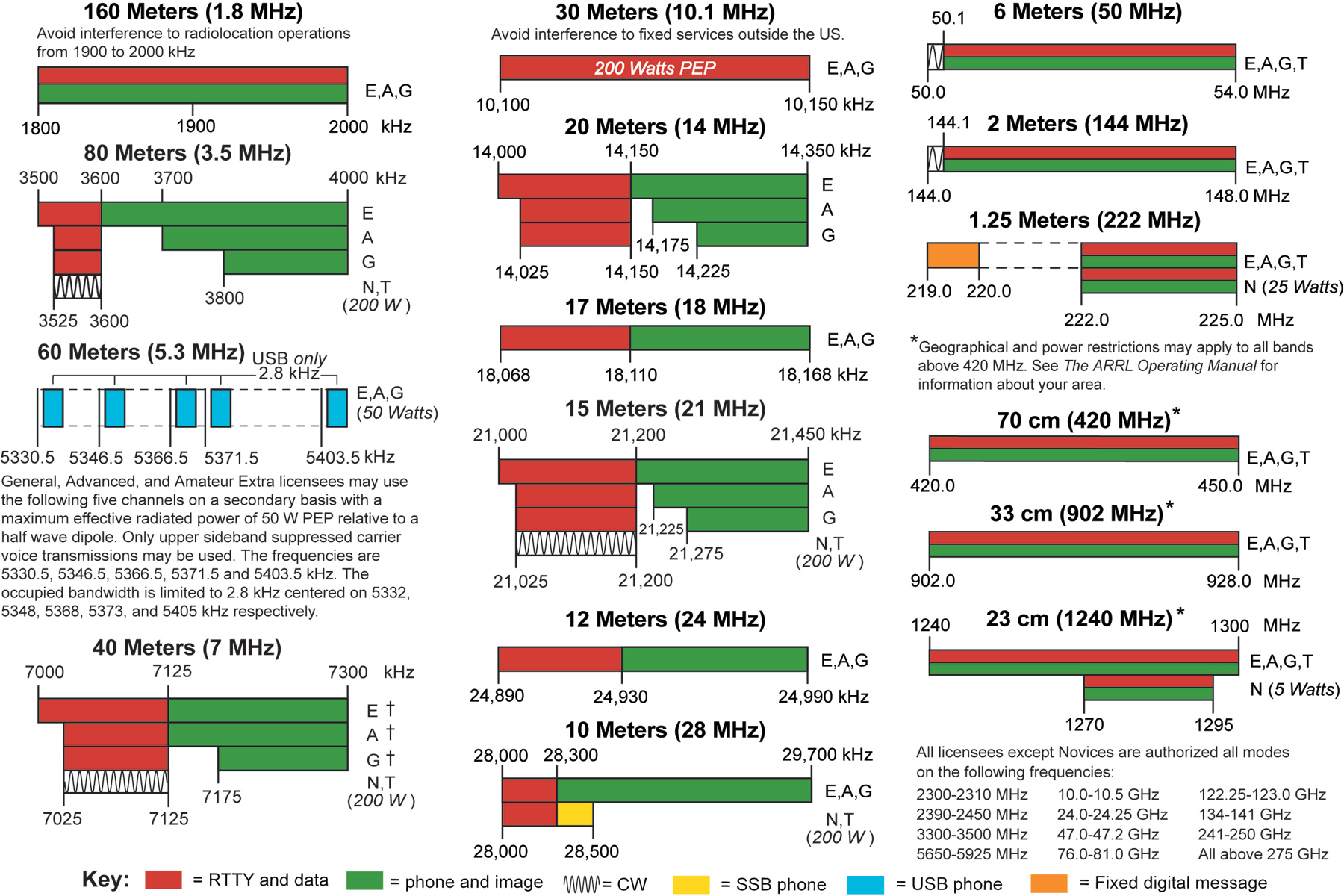

The band comes into its own during the years of the sunspot minimum, but it can perform well at any time. Distances of over 1000 miles are very common, and greater distances can be achieved by those with good antennas. At night ham radio stations from further away can be heard. Also the levels of static can be quite high.ĭuring the day stations up to a few hundred miles away can be heard, making it an ideal band for medium distance contacts. This ham radio band can be quite noisy, especially at night as it is shared with other services and this can make it very busy. Typically this can be 3.5 - 3.8 MHz, although in North America, frequencies up to 4.0 MHz can be used, although there is a broadcast band allocation above 3.8 MHz. The actual allocation depends upon the radio region in which the country is located. The 80 metre or 75 metre ham radio band is actually within the HF part of the spectrum. As this does not correspond with optimum conditions in the other hemisphere, it means that these signals may be heard at any time of the year. As a general rule, long-distance work improves in winter because of the longer hours of darkness and lower levels of static. Long-distance, north-south paths often peak around midnight. These enhancements may only last for 10 to 15 minutes at maximum, and sometimes less.įor shorter paths, like those between Europe and North America, signals peak when it is either sunrise or sunset at one end or the other. However, there can be significant improvements at dawn and dusk for contacts with the other side of the globe.

It is even possible to make contacts over longer distances.įor very long distance contacts on Top Band, the whole of the path must lie in darkness. For stations in North America and Europe, it is even possible to make transatlantic contacts when conditions are right if sufficiently good antennas are available at both ends. At night, when the D layer in the ionosphere disappears, distances increase and it may be possible to hear stations several hundreds of miles away. As such it is used for relatively local ham radio contacts during the day when signals are heard via ground wave and, dependent upon transmitter powers and antennas, distances of 50 miles or more may be reached. With frequency of this ham radio allocation located just above the Medium Wave broadcast band, Top Band possess many of the same characteristics. In the UK, for example the lower limit of this ham band is 1.81 MHz. In general the maximum extent of any allocation fall between 1.8 and 2.0 MHz. Top Band is not allocated for ham radio use in all countries and the exact limits of the bands may vary. Although it is termed one of the short wave bands and is often mentioned with the other HF amateur radio bands, to be exact it is actually in the MF portion of the spectrum. Top Band is the lowest frequency ham radio allocation. However there is a high degree of similarity between the amateur radio band allocations across the world at HF. Also the 80 and 40 metre bands may be different according to the region of the world in which the station is located. The main areas where there are differences are on Top Band (160 metres) where some countries have reduced ham radio allocations as a result of their use by other services. A summary of the different bands is given below.Īlthough the table above shows the amateur radio band allocations for the UK and USA, the ham radio bands are very much the same for other countries. These bands are generally the same world-wide although there are some variations dependent upon the country or region dependent upon the actual amateur radio band in question. In the HF portion of the radio spectrum, there is a total of nine different bands that are allocated to ham radio around the globe. However a broad view of the ham radio band allocations can be given, and this is accompanied below with an overview of the properties of the different allocations for radio amateurs. These ham radio bands or frequency allocations are open to radio hams around the world to use although the actual ham radio allocations do vary slightly from country to country and region to region. There is a good variety of ham bands or amateur radio allocations within the HF portion of the short wave spectrum. Ham radio bands summaries 136 kHz LF band HF bands VHF bands UHF bands HF Ham Bands and Frequencies The different HF amateur radio or ham radio bands, each have different characteristics resulting from the radio propagation, the allocations in different areas of the world and their general usage.


 0 kommentar(er)
0 kommentar(er)
